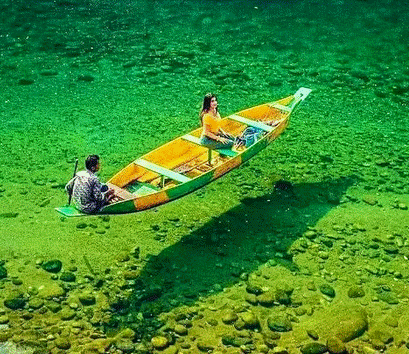Why in News ?
- Meghalaya’s Umngot River, known for its crystal-clear water and a key tourism attraction in Dawki and Shnongpdeng, has turned muddy and opaque this October 2025.
- Locals and environmentalists blame construction debris and soil dumping from the Shillong–Dawki road upgrade project carried out by NHIDCL (National Highways & Infrastructure Development Corporation Ltd.).
- The issue has prompted intervention requests to the Union Ministers for Transport and Environment by local MP Ricky Syngkon.
Relevance :
GS Paper III (Environment & Ecology):
- Environmental impact of infrastructure in ecologically fragile zones.
- River sedimentation, erosion control, and bioengineering methods.
- Role of EIA, NHIDCL, and sustainable tourism in hill ecosystems.
GS Paper I (Geography):
- Human–environment interaction in the hilly regions.
- Impact of development on river systems and livelihoods.

Basic Facts
- River: Umngot River
- Location: Flows through West Jaintia Hills District, Meghalaya
- Tributary of: Not a major tributary, but part of the Umngot–Myntdu system
- Tourism Importance: Dawki and Shnongpdeng—famous for boating on transparent water
- Project Involved: Upgradation of 81 km Shillong–Dawki highway to a two-lane highway (10 m carriageway)
Ecological Concerns
- Loss of water clarity affects aquatic life and local livelihoods dependent on tourism and fishing.
- Sedimentation alters river ecology, reduces light penetration, and harms species diversity.
- Tourism Decline: Tourists deterred due to loss of visual appeal, affecting the local economy.
- Soil Dumping Issue: Improper stabilization and containment of excavated material on steep slopes causing run-off during rainfall.
Way Forward
- Immediate Actions:
- Remove dumped debris near the river.
- Enforce strict adherence to environmental SOPs for hilly construction zones.
- Conduct Environmental Impact Assessment (EIA) review for ongoing segments.
- Long-Term:
- Adopt bioengineering methods (vegetative stabilization, silt traps).
- Continuous water quality monitoring of Umngot and similar hill rivers.
- Integrate eco-tourism safeguards into infrastructure policy in ecologically sensitive zones.



